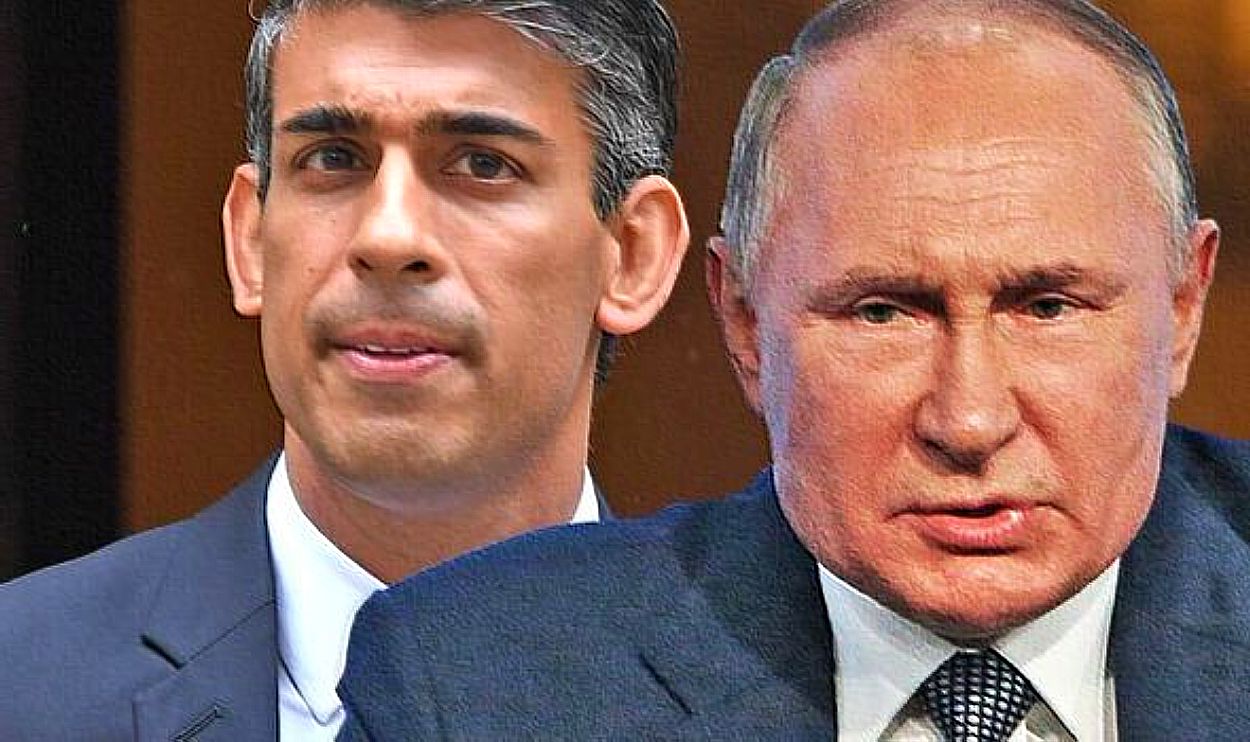A British Parliament report has done a scathing assessment of the glaring capability gaps in the UK armed forces. The report comes against the backdrop of the Ukraine-Russian war and clarifies that the UK does not have a Tier-1 armed force or the necessary firepower to defend the country against Russia and China.
India, China, Pakistan & Philippines: Is Another Conflict Brewing In Asia As Manila Opens Up ‘Disputed’ Spratly Islands For Tourism?
The report deduces that the “hollowing out” of the UK defense forces is the outcome of the “underfunding” of its modernization programs.
The report underscores the capability gaps the British forces have owing to “retirement of key equipment without replacement, lack of adequate air and missile defense capabilities, inadequate munitions stockpiling, insufficient regular close support units and shortage of air transport.
The eye-opener report by the House of Commons Defense Committee underscores what many of the NATO countries are woefully aware of – their inadequacy in the face of a belligerent power like Russia with a wide defense production base.
A think-tank, Human Security Center (HSC), that provided evidence to the committee in this regard doubts the readiness of the UK Armed Forces for a conflict of this scale. The British Parliament opened the inquiry into the preparedness of the forces in April 2023.
The evidence shows the delay in critical programs like the Type-26 frigate, Astute-class submarine, and the Fleet Solid Support Shift Programme.
This has resulted in the “retirement” or “aging” of weapon platforms without their replacement in sight. The British forces are also short of submarines, helicopters, and Royal Marines, hampering its preparedness greatly.
Another glaring capability shortfall is in its air force. The report contends that the country’s “maritime patrol and planned airborne early warning and control capabilities are thin, and kinetic ground-based air and missile defense capabilities are absent.”
In other words, the Royal Air Force doesn’t have the wherewithal to fully suppress the enemy air defense/Destruction of Enemy Air Defense (SEAD/DEAD).
The scope of the committee’s investigation was to assess the threat that the country faces in the foreseeable future. The committee discerned that Russia and China would be the biggest threat to the country in the near future.
“The UK has failed to commit to additional investment in its armed forces in the wake of the Russian invasion of Ukraine. Britain’s economic and domestic public service problems are very real, but there is a need to ensure that we are prepared to allocate additional resources to defense both immediately to rectify underlying problems and make further investments in the medium to long-term should the post-Ukraine European security order demand it,” an HSC Deputy Director Dr. Rowan Allport said.
Ammunition Stockpile & Defense Industry
The protracted war marked by the barrage of artillery and missile fire highlights the importance of having big stockpiles of munitions. The evidence gathered highlights “the importance of large, secure stockpiles of munitions and having access to an industrial base capable of surging production” as its biggest “lesson learned” from the war in Ukraine.
The EurAsian Times had noted in several previous reports that Ukraine is otherwise able to fight purely because of Western military support and does not have a defense industry of its own. This is because Russia achieved its goal of “demilitarizing” Ukraine in the initial months through long-range missile strikes.
Ironically, European nations and the US arming Ukraine have weakened their militaries since many weapons transfers were from their own stockpiles. Worse, replenishing them is another task owing to the deindustrialization and decline in manufacturing in many of these countries, especially the US.

Conversely, Russia has sustained only a limited impact of sanctions with a largely stable economy with strong fundamentals, projected to grow further by the International Monetary Fund (IMF) and World Bank (WB).
Its defense industry faced initial issues and ammunition shortages ten months into the war, but it is still the most capable in the world. Its military continues to degrade the Ukrainian armed forces, blunting its latest counteroffensive and periodically firing cruise missile volleys into Kyiv, indicating its military manufacturing is largely unaffected.
Interestingly, the lessons learned from the long-drawn war are not lost on China either. Having the industrial capacity and a large ordnance stockpile is imperative to sustain a prolonged protracted conflict.
The EurAsian Times reported how, looking at Ukraine, China would not want to start a war over Taiwan without being fully prepared for it.
Boots On The Ground Matters
The forces can have as many unmanned combat aerial vehicles as the country’s economic and industrial capability allows. But it will be immaterial without the requisite number of boots to hold the ground. Along with the number of troops, adaptability to the evolving conflict scenario is also an important factor in emerging victorious once the war ends.
The HSC recommended the “critical nature of the ability to deploy a force with sufficient mass and possessing a rapid force generation capability to accomplish goals in major conflicts.” A subsequent comment on a Russian military characteristic “to recover from setbacks” is also advised to “not be underestimated.”
Both these perceptions and appreciations of an adversary’s (Russia) military doctrine had come from Britain itself previously and none other than its Chief of General Staff (CGS) General Patrick Sanders in July last year.
The EurAsian Times had reported Sanders’s speech at the Royal United Services Institute (RUSI) Land Warfare Conference, where he urged Britain to take a cue from Russian military philosophy. He called “land the decisive domain,” adding, “It takes an army to hold and regain territory and defend the people.” Nearly a year after his comments, HSC had to have envisaged a significant land component while recommending a deployable “mass…sufficient” force.
Sanders then noted the peculiar Russian tendency of ignoring smaller tactical defeats over larger strategic victories while fighting long, drawn-out wars. “Russia wages war at the strategic, not the tactical level; its depth and resilience means it can suffer any number of campaigns, battles, and engagements lost, regenerate, and still ultimately prevail,” he said.
Loitering Munitions & Anti-Radar Missiles
The assertion that “uncrewed systems will be central in future conflicts” also reflects the reality in Ukraine. Russian Lancet-3 and Geranium-2 kamikaze drones have become the mainstay of the tactical battlefield, long-range strategic strikes.
Kamikaze drones reduce the dependence on vulnerable and long supply lines and are logistically far easier to carry heavier guns and tube-rocket artillery.
While the latter has advantages, Lancet-3 helped Russia take out 45 percent of the North Atlantic Treaty Organization (NATO) supplied Western artillery and became the mainstay of counter-battery (anti-artillery) fire.
Gerans meanwhile hit several dozen civilian-military targets in Kyiv by taking out command centers and power generation facilities. Then they led the Suppression of Enemy Air Defense/Destruction of Enemy Air Defense (SEAD/DEAD).
The drones baited several Ukrainian-used Western and Soviet-origin radars into targetting it – either getting destroyed or expanding their ammunition stocks.
Lastly, it shoots down the idea that the UK is a Tier One force, given its shortfalls in combat aircraft, air transport, and delays in warships and submarine construction/acquisition programs.
- The author can be reached at satamp@gmail.com
- Follow EurAsian Times on Google News




